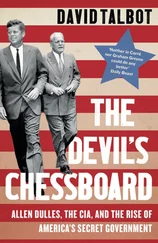Thompson said that, like other new members, he was trained to kill without blinking, without reservation. One A.B. instruction manual, which was seized by authorities, stated, “The smell of fresh human blood can be overpowering but killing is like having sex. The first time is not so rewarding, but it gets better and better with practice, especially when one remembers that it’s a holy cause.” During a confidential debriefing with prison officials, one Aryan brother described how members studied anatomy texts, so “that when they stab somebody it was a killshot.”
In 1981, according to prison records, Thompson approached one of the gang’s enemies “from behind and began stabbing him,” and “continued” striking his victim “as he lay on the floor.” Thompson once wrote in a letter, “Knife fighting, at its best, is like a dance. Under ideal conditions, the objective is to bleed your opponent-cutting hands, wrist, and arms and as the opponent weakens from blood loss, inflicting further damage to the face (eyes) and torso.”
Inmates were frequently killing each other not because of any actual slight but because of the color of their skin. In one incident, Silverstein and an A.B. associate, Clayton Fountain, who, according to a friend, was eager to “make his bones,” stabbed a leader of the rival gang D.C. Blacks sixty-seven times in the shower, then dragged his bloody corpse through the tiers while other white inmates chanted racial slurs. After Silverstein was charged with murdering another inmate, he boasted in court, “I have walked over dead bodies. I’ve had guts splattered all over my chest from race wars.”
To try to rein the Brand in, prison officials, in desperation, had begun to place its members throughout the correctional system. (No inmate would publicly admit being in the gang, and, when asked under oath, would typically say, “Sir, I will not answer a question like that.”) The dispersal measures, however, only spread the Brand’s reach to penitentiaries in Texas and Illinois and Kansas, and still farther east, to Pennsylvania and Georgia. A once classified 1982 F.B.I. report warned that leaders were “recruiting for the A.B., only now they had the entire country to pick from.” One letter from a gang member, which was obtained by Texas prison sociologists, said, “All members shipped from here last week have written back and it looks like the family is in the process of growing.” Another stated, “We are growing like a cancer.”
Upon entering a new prison, Brand members would often carry out a “demonstration” killing or stabbing, in order to terrorize the inmate population. The Baron reportedly ordered that one foe be “taken out in front of everyone, to let these motherfuckers know we mean business.” Indeed, rather than conceal its murders, the gang flaunted them even in front of the guards, as if to show it had no fear of repercussions, of being shot or sentenced to life without parole. “We wanted people to think we were a little crazy,” Thompson said. “It was a way, like Nietzsche said, of bending space and reality to our will.”
On a Saturday morning in the fall of 1983, at Marion federal prison, in southern Illinois, Thomas Silverstein waited for guards to take him for a routine shower. Marion, which is about a hundred miles southeast of St. Louis, was opened in 1963, the year that Alcatraz closed, and was designed to cope with the profusion of violent gang members-in particular, men like Silverstein, who by then had been convicted of murdering three inmates and had earned the nickname Terrible Tom (as he often signed his letters, with looping strokes).
Before taking Silverstein to the bathroom, the guards frisked him, to make sure he hadn’t fashioned any weapons. (He often had pens and other sketching tools for his artwork.) They also shackled his wrists. Three guards surrounded him, one of whom was a hard-nosed, nineteen-year veteran with military-style gray hair named Merle Clutts. Clutts, who was to retire in a few months, was perhaps the only guard in the unit who didn’t fear Silverstein; he once reportedly told him, “Hey, I’m running this shit. You ain’t running it.”
As the guards escorted Silverstein through the prison, he paused outside the cell of another gang member-who, as planned, suddenly reached between the bars and, with a handcuff key, unlocked Silverstein’s shackles. Silverstein pulled a nearly foot-long knife from his conspirator’s waistband. “This is between me and Clutts,” Silverstein hollered as he rushed toward him.
One of the other guards screamed, “He’s got a shank!” But Clutts was already cornered, without a weapon. He raised his hands while Silverstein stabbed him in the stomach. “He was just sticking Officer Clutts with that knife,” another guard later recalled. “He was just sticking and sticking and sticking.” By the time Silverstein relinquished the knife-“The man disrespected me,” he told the guards. “I had to get him”-Clutts had been stabbed forty times. He died shortly afterward.
A few hours later, Clayton Fountain, Silverstein’s close friend, was being led through the prison when he paused by another inmate’s cell. In an instant, he, too, was free. “You motherfuckers want a piece of this?” he yelled, waving a blade. He stabbed three more guards. One died in the arms of his son, who also worked in the prison. Fountain reportedly said that he didn’t want Silverstein to have a higher body count.
It was the first time in the history of American federal prisons that two guards had been killed on the same day. “You got to understand,” Thompson said. “Here were guys in restraints, locked in the Hole in the most secure prison, and they were still able to get to the guards. It sent a simple message: We can get to you anywhere, anytime.”
As the gang’s reputation for brutality was growing, so, too, were its ranks. Although the Brand continued to permit only a select few to become “made” members, it had thousands of followers, known as “pecker-woods,” who sought out the perks of being associated with it: permanent protection, free contraband, better prison jobs (which were often dictated by trusty inmates who did whatever the gang demanded). As Thompson put it, “The guards controlled the perimeter of the prison and we controlled what happened inside it.” But as the number of gang members, associates, and hangers-on swelled, managing the organization grew increasingly difficult.
When the Brotherhood was in its infancy, every member had an equal vote on critical matters; by the early eighties, this policy was creating chaos. In a previously undisclosed briefing, Clifford Smith told authorities, “We used to be one man one vote, included damn near everything. I mean, damn near everything. Somebody getting in, whacking somebody… You damn near had to have the whole state’s okay… You had to send some kites”-notes-“and runners and lawyers and this and that. It always got tipped off by the time we got back to you and said, ‘Yeah, dump the guy.’… You can’t have someone in the yard that you want to bump and let them be out there for two or three weeks.” Smith said the gang members were becoming “like twelve horses teamed to one wagon, with each of them going in a different direction.” An internal report at the time by the California Department of Corrections went so far as to predict that “the A.B. will probably not propose a serious threat to law enforcement agencies in the future unless it gains a clear and well enforced chain of command.”
Thompson started to push for just that. “I wanted to eliminate the irrationality and make it into a true organized-crime family,” he said. “I wasn’t interested in killing blacks. I was interested in only one thing: power.”
He and other leaders hatched a plan with gang members who were incarcerated at a prison in Chino, in Southern California. These men, who were awaiting trials for the assaults or murders of fellow-inmates, were encouraged to represent themselves as attorneys, thereby allowing them to subpoena their colleagues around the country as witnesses. Each time a Brand member sent out a “writ,” another member would have to be relocated to Chino. For several days, using what one member called “subpoena power unlimited” and exploiting the very legal system that was trying to stop them, most of the Brand was able to meet for hours in the yard, in what amounted to a private convention.
Читать дальше











